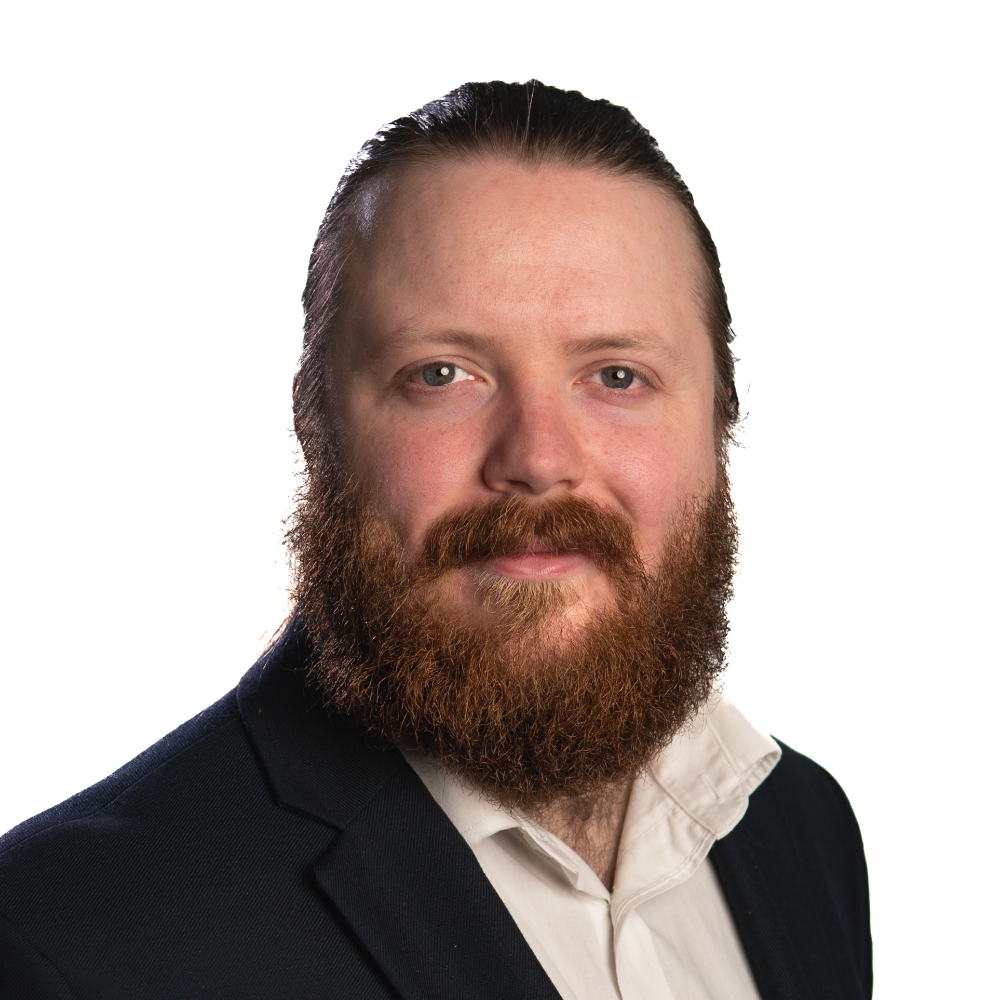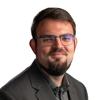What Do Trump's Tariffs Mean for Fintech & Payments?
(UPDATE: On April 9th, Donald Trump announced a 90-day pause on higher US tariffs for affected countries, introducing instead a universal “reciprocal tariff” of 10%. However, tariffs on Chinese imports were raised sharply to 145%.)
The latest tariffs imposed by the Trump Administration’s have sent shockwaves through the global economy, rattling markets worldwide. In just a matter of days, the Nasdaq plunged 6%, the FTSE 100 slipped 1.5%, and Germany’s DAX dropped 3%.
While the immediate hit is focused on imported goods and the industries that support them, the ripple effects are likely to reach much further: putting even untargeted sectors like fintech and payments in the firing line.
What Are the Tariffs?
The tariffs are a flat tax applied to goods entering the US, with the cost falling on the companies doing the importing. The White House has announced a baseline 10% tariff on all imports, with steeper rates targeting specific countries. Notably, Canada and Mexico were excluded from this latest round, though their goods are already subject to separate tariffs. According to the White House, these measures are being positioned as reciprocal, aiming to level the playing field.
Extent of Tariffs Imposed by the US (%)

Source: White House
Impact on Cross-border Payments
The B2B cross-border payments market is likely to feel the impact of the tariffs first and most acutely. These transactions are already more complex and costly than domestic payments, and the new tariffs will only add friction.
For providers, this could mean a drop in payment volumes to and from the US, with trade routes shifting as businesses look for more cost-effective options. Heavily impacted countries like Vietnam may see a sharp decline in transaction flow, while others with similar advantages but fewer trade barriers could benefit. Still, even with new corridors gaining traction, the overall volume of transfers is expected to fall. This downturn could squeeze smaller, less resilient players in the space and dampen momentum for innovation.
With fewer incentives to connect the US to global payment systems, efforts to streamline cross-border processes may start to lose steam.
What Will Happen to the Dollar?
Since the Bretton Woods Agreement in 1944, the US dollar has held its place as the global reserve currency, becoming the de facto medium for international trade. Even when two countries trade without using the dollar domestically, transactions are often routed through it. But with US tariffs likely to dampen international trade, fewer businesses will see the need to hold or transact in dollars.
This shift comes as momentum builds behind BRICS Pay, especially following the October 2024 BRICS summit in Russia. Countries like Russia, Iran and China have been vocal about reducing their dependence on the dollar to sidestep Western sanctions and dilute the US’s financial influence. By weakening economic ties between the US and its trading partners, these tariffs may accelerate the adoption of alternative systems, particularly if China actively promotes participation.
This also ties into a broader global movement towards developing homegrown payment infrastructure. From Europe’s push for instant payment schemes to East Asia’s rise in QR code based solutions, domestic alternatives are increasingly competing with US-led networks such as Visa and Mastercard. As seen after Russia’s invasion of Ukraine, the US can pressure these networks to suspend services, exposing the risks of overreliance. In response, many nations are seeking sovereign control over payment rails, and platforms like BRICS Pay or stablecoins offer potential routes around dollar-dominated systems.
While these tariffs didn’t spark the trend, they have certainly added fuel to the fire. Combined with rising geopolitical tensions, they are acting as a catalyst; driving countries to seek more control, more resilience, and fewer ties to US-led financial systems.
What Happens Next?
The tariffs came into force on Saturday 5th April, giving businesses and payment providers very little time to prepare. A point of uncertainty in this process is that critics argue the White House does not have the authority to implement these tariffs, as such measures typically fall within Congress’s remit. This opens the door for a legal challenge, as seen with other controversial executive orders, meaning the future of these tariffs is far from guaranteed.
If the tariffs are here to stay, it’s unlikely that they will push the US out of the trading landscape for many affected countries; the US remains too large a market to ignore. However, solutions that simplify the payment of tariffs, alongside digital methods for tracking goods, verifying their origin, and determining applicable tariffs, are likely to see increasing demand. This presents an opportunity for vendors who can crack these challenges.
Ultimately, this move will only complicate cross-border payments further and is likely to speed up existing trends that diminish the US dollar’s dominance in global trade.
A Senior Research Analyst at Juniper Research, Michael primarily conducts research on digital identity and payments markets. His recent reports include Chargeback Management, Digital Wallets, and Digital Identity.
Latest research, whitepapers & press releases
-
 ReportDecember 2025
ReportDecember 2025AI Agents for Customer Experience Platforms Market: 2025-2030
Our comprehensive AI Agents for Customer Experience Platforms research suite comprises detailed assessment of a market that is set to disrupt mobile communications. It provides stakeholders with insight into the key opportunities within the AI agents for customer experience platforms market over the next two years.
VIEW -
 ReportDecember 2025Fintech & Payments
ReportDecember 2025Fintech & PaymentseCommerce Fraud Prevention Market: 2025-2030
Our eCommerce Fraud Prevention research suite provides a detailed and insightful analysis of this evolving market; enabling stakeholders from financial institutions, law enforcement agencies, regulatory bodies and technology vendors to understand future growth, key trends, and the competitive environment.
VIEW -
 ReportNovember 2025Telecoms & Connectivity
ReportNovember 2025Telecoms & ConnectivityeSIMs & iSIMs Market: 2025-2030
Juniper Research’s eSIMs and iSIMs research suite offers insightful analysis of a market set to experience significant growth in the next five years. The research suite provides mobile network operators (MNOs), original equipment manufacturers (OEMs), and eSIM management and platforms vendors with intelligence on how to capitalise on the market growth, and guidance on how eSIM-only devices and sensors, SGP.42, in-factory provisioning, and iSIMs will change the competitive landscape.
VIEW -
 ReportNovember 2025Fintech & Payments
ReportNovember 2025Fintech & PaymentsModern Card Issuing Platforms Market: 2025-2030
Our Modern Card Issuing Platforms Market research suite provides a detailed and insightful analysis of this evolving market; enabling stakeholders from banks, financial institutions, fintech companies, and technology vendors to understand future growth, key trends, and the competitive environment.
VIEW -
 ReportNovember 2025Fintech & Payments
ReportNovember 2025Fintech & PaymentsDigital Wallets Market: 2025-2030
Our digital wallets research suite provides detailed analysis of this rapidly changing market; allowing digital wallet providers to gain an understanding of key payment trends and challenges, potential growth opportunities, and the competitive environment.
VIEW -
 ReportOctober 2025Fintech & Payments
ReportOctober 2025Fintech & PaymentsDigital Identity Market: 2025-2030
Juniper Research’s Digital Identity research suite provides a comprehensive and insightful analysis of this market; enabling stakeholders, including digital identity platform providers, digital identity verification providers, government agencies, banks, and many others, to understand future growth, key trends, and the competitive environment.
VIEW
-
 WhitepaperDecember 2025Telecoms & Connectivity
WhitepaperDecember 2025Telecoms & ConnectivityHuman + AI: Drivers of Customer Experience AI Agents in 2026
Our complimentary whitepaper, Human + AI: Drivers of Customer Experience AI Agents in 2026, examines the key drivers of the AI agents for customer experience platforms market in 2025.
VIEW -
 WhitepaperDecember 2025Fintech & Payments
WhitepaperDecember 2025Fintech & PaymentsBeyond Chargebacks: The True Cost of Fraud for Digital Commerce
Our complimentary whitepaper, Beyond Chargebacks: The True Cost of Fraud for Digital Commerce, examines the state of the eCommerce fraud prevention market; considering the impact of evolving digital fraud strategies, including key trends such as identity theft, account takeovers, chargebacks, policy abuse and friendly fraud.
VIEW -
 WhitepaperNovember 2025Telecoms & Connectivity
WhitepaperNovember 2025Telecoms & ConnectivityeSIM-only Devices: The Impact on Operators, Consumers, and IoT
Our complimentary whitepaper, eSIM-only Devices: The Impact on Operators, Consumers, and IoT, explores the challenges and opportunities for the three segments, with a particular focus on eSIM-only smartphones and SGP.42.
VIEW -
 WhitepaperNovember 2025Fintech & Payments
WhitepaperNovember 2025Fintech & PaymentsUnlocking the Next Stage of Growth for Modern Card Issuing Platforms
This free whitepaper analyses key trends shaping the modern card issuing space, and the ways in which modern card issuing platforms can capture growth.
VIEW -
 WhitepaperNovember 2025Fintech & Payments
WhitepaperNovember 2025Fintech & PaymentsTop 10 Fintech & Payments Trends 2026
Fintech is evolving fast. From stablecoins to agentic AI, our annual guide reveals the shifts redefining payments, digital identity, and the future of money in 2026. Download your copy today.
VIEW -
 WhitepaperNovember 2025Fintech & Payments
WhitepaperNovember 2025Fintech & PaymentsDigital Wallets: Empowering Financial Inclusivity
Our complimentary whitepaper, Digital Wallets: Empowering Financial Inclusivity, examines the state of the digital wallets market; considering the impact of digital wallets on different geographies, how they are shaping the modern payments landscape through lower transaction fees and promoting financial inclusivity for underbanked populations, and how they are competing with established payment methods.
VIEW
-
Telecoms & Connectivity
Travel eSIM Margins Under Pressure as Revenue per Gigabyte Falls 10% Globally in Two Years
December 2025 -
Telecoms & Connectivity
AI Agents to Power 1,000% More Customer Interactions for Enterprises Globally by 2027
December 2025 -
IoT & Emerging Technology
Global D2C Revenue Set for $370 Million Surge, But Satellite Operators Should Not Chase Full MNO Status
December 2025 -
Fintech & Payments
Digital Goods Fraud to Cost eCommerce Merchants $27 Billion Globally by 2030 as AI Tools Accelerate Attacks
December 2025 -
Fintech & Payments
AML Adoption to Hit 3.8 Million Businesses Globally by 2030, With Europe at the Forefront
November 2025 -
Telecoms & Connectivity
eSIM Connections to Grow 300% Globally in Next 5 Years, as China Presents Instant Opportunities
November 2025























